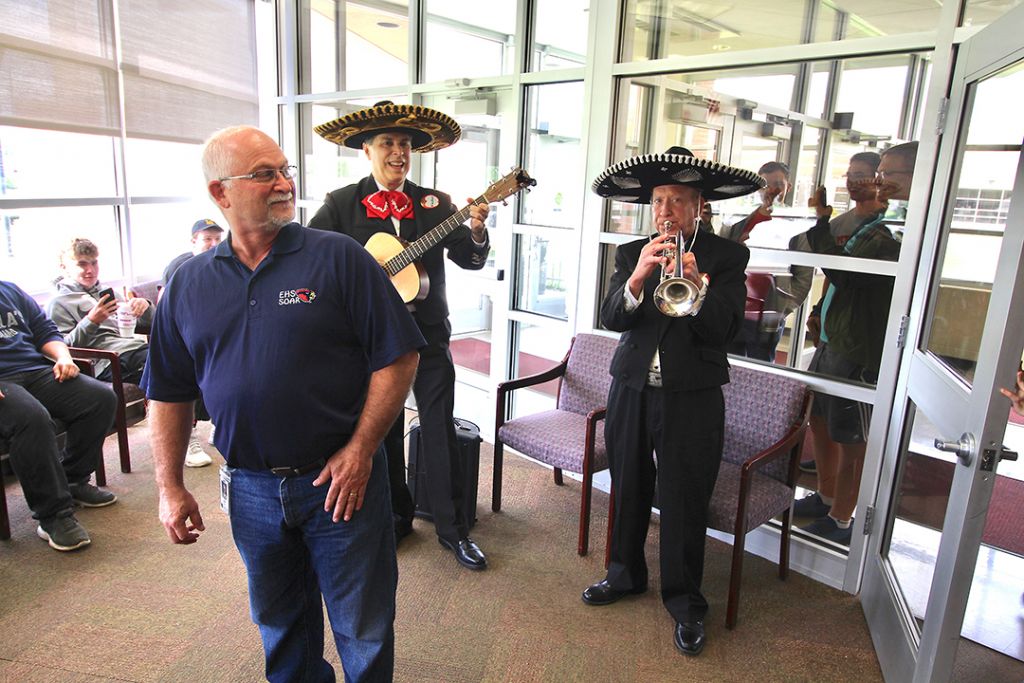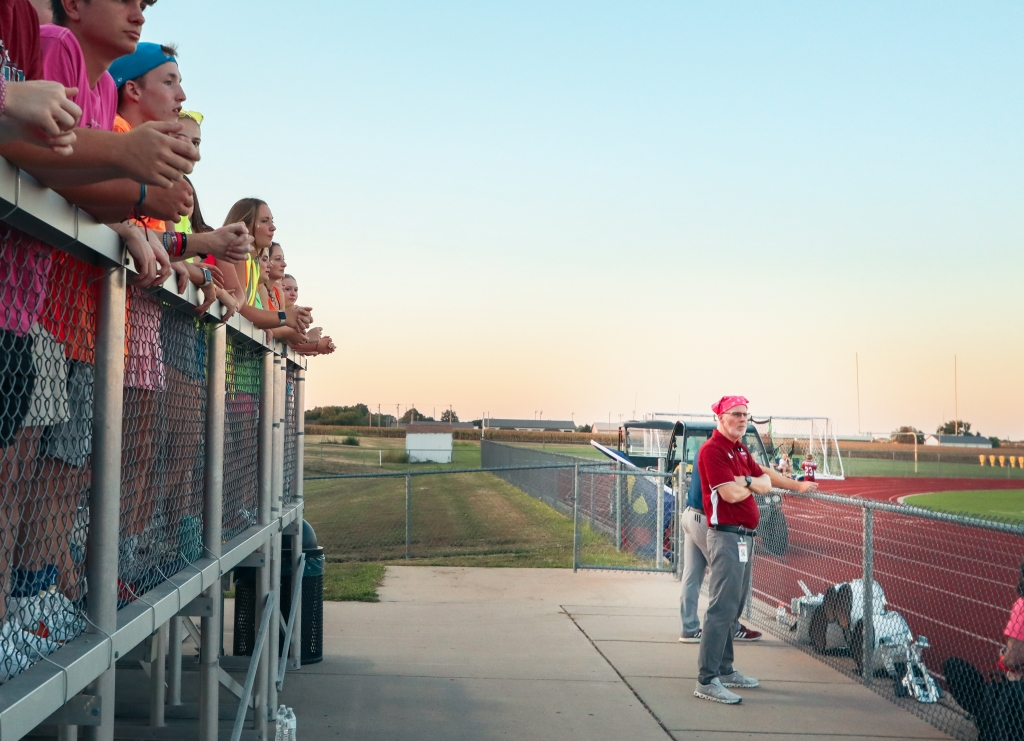Standing Desks and Spinning Chairs

STORY BY WRIGLEY HEIDE »
When a co-worker in 2015 told EHS counselor Susan DeVoe that sitting was the new smoking, she took to Google to see for herself. She soon discovered
that a standing desk provided a surprising number of important
health benefits when compared to a traditional desk and chair.
“(They’re) helpful for people who struggle with paying attention,” DeVoe said, ”and since I struggle with attention, it seemed like something to try
out.”
In addition to increased awareness during work, other bonuses include increased mobility, along with a better ability to focus – particularly after
eating or late into the day. Mr. Robinson, EHS Video Teacher, is another prominent advocate for the standing desk as well, and wants to pass his
positive experiences on to the students that participate in his classes.
“I think students would be more active if they stood,” he said. “This year I have startedt o plan and think about how I could get 4 of my 6 computer
rows up to a standing desk.” While remaining optimistic, he does foresee some potential snags in the process.
“My standing desk is a lot taller than the average high school student would need and would actually make it more uncomfortable,” he said. “But I’m going to do it at some point.”
Mr. Robinson would love to give students the choice of what type of desk to use, and plans to leave certain desks open to students that prefer to sit rather than stand. But would students be up to standing desks? Or would they rather stick to the traditional desk and chair? Also, which would they choose if given the choice between a spinning and
non-spinning chair? Sophomore Lexi Howell prefers to stay with the conventional desk, but concedes that “it often gets very boring just sitting there”. Additionally, Howell chose the spinning over the non-spinning chair.
“I wouldn’t mind an option for standing desks if I had trouble staying awake,” said Junior James Cromer. He also prefers a chair that spins to a stationary chair. Sophomore Holden Andrews also chimed in with an interesting take: “If we had to stand all day, kids would get tired faster and be less focused towards the end of the day.”
While the students sound mostly indifferent to the idea of a standing
desk, all of them agreed on one thing: Spinning chairs. While not offering the same mobility as a standing desk, nor the stability of a classic chair, it was clearly preferred by students – at least for the moment.
However, the choice between mobile and static chairs may not be the only ergonomic choice that affects your health. “It’s more about posture
than the actual chair,” said Mr. Robinson. “Come in during a freshman class some time and look at the sloppiness of their posture.”
Sophomore Danny Campbell was the unfortunate victim of a recent spinning-chair incident. It occurred during his Graphic Design class, and he agrees that it was poor posture that directly led to his spectacular tumble.
“I was leaning forward tipped a bit too far…” recalled Campbell. “I was just being an idiot.”
However, he holds no ill feelings towards spinning chairs.








